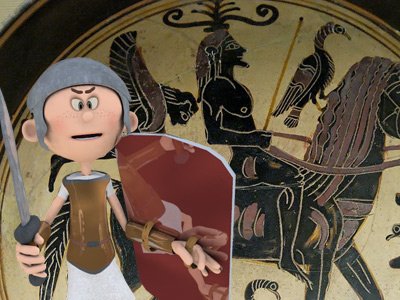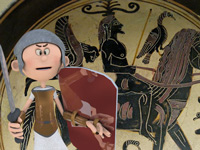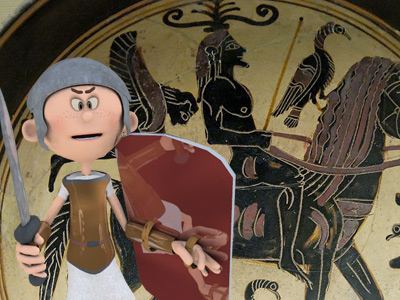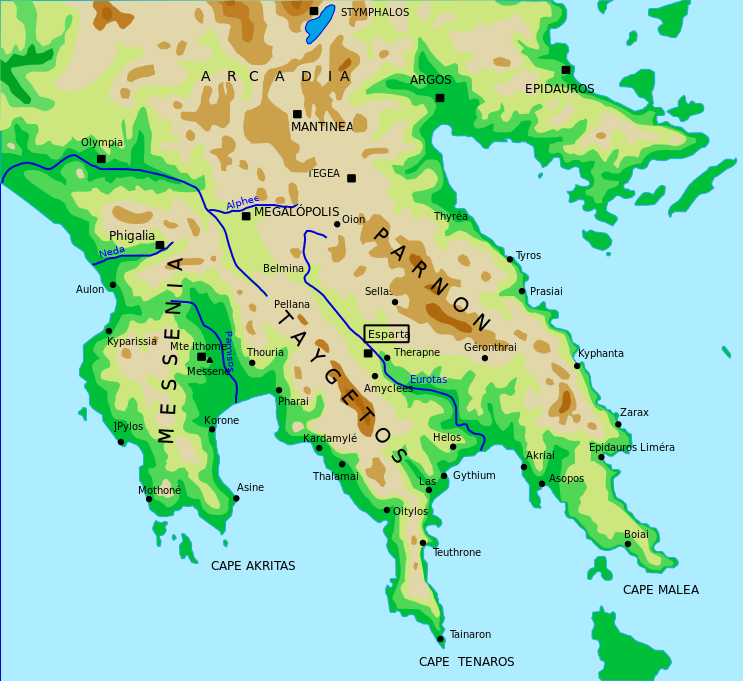Roman-Spartan War (195 BC)

Nabis' Reforms
In return for his assistance in the war, Rome accepted Nabis' possession of the polis of Argos. While Nabis was already King of Sparta, he made his wife Apia ruler of her hometown Argos. Afterwards, Apia and Nabis staged a financial coup by confiscating large amounts of property from the wealthy families of these cities, and torturing those who resisted them; much of the confiscated land was redistributed to liberated helots loyal to Nabis. After increasing his territory and wealth by the aforementioned method, Nabis started to turn the port of Gythium into a major naval arsenal and fortified the city of Sparta. His Cretan allies were already allowed to have naval bases on Spartan territory, and from these they ventured on acts of piracy. His naval buildup offered a chance even for the very poor to participate, as rowers, in the profitable employment. However, the extension of the naval capacities at Gythium greatly displeased the abutting states of the Aegean Sea and the Roman Republic The Roman Republic was a form of government of Rome and the era of the classical Roman civilization when it was run through public representation of the Roman people. Beginning with the overthrow of the Roman Kingdom (traditionally dated to 509 BC) and ending in 27 BC with the establishment of the Roman Empire, Rome's control rapidly expanded during this period - from the city's immediate surroundings to hegemony over the entire Mediterranean world..
The Roman Republic was a form of government of Rome and the era of the classical Roman civilization when it was run through public representation of the Roman people. Beginning with the overthrow of the Roman Kingdom (traditionally dated to 509 BC) and ending in 27 BC with the establishment of the Roman Empire, Rome's control rapidly expanded during this period - from the city's immediate surroundings to hegemony over the entire Mediterranean world..
Nabis' rule was largely based on his social reforms and the rebuilding of Sparta's armed forces. The military of Lacedaemonia, Sparta, had traditionally been based on levies of full citizens and perioeci (one of the free non-citizen groups of Lacedaemonia) supported by lightly armed helots. From several thousands in the times of the Greco-Persian Wars, the numbers of full citizen Spartans had declined to a few hundred in the times of Cleomenes III. There were possibly several reasons for the decline of numbers, one of which was that every Spartan who wasn't able to pay his share in the syssitia (common meal for men in Doric societies) lost his full citizenship, although this didn't exclude his offspring from partaking in the agoge (traditional Spartan education and training regime).
As a result, the fielding of a respectable hoplite army without mercenaries or freed helots was difficult. Cleomenes increased the number of full citizens again and made the Spartan army operate with an increased reliance on more lightly armored phalangites of the Macedonian style. However, many of these restored citizens were killed in the Battle of Sellasia and Nabis' politics drove the remainder of them into exile. In consequence, the heavy troops were no longer available in sufficient numbers. This led to a serious decline in Sparta's military power, and the aim of Nabis reforms was to reestablish a class of loyal subjects capable of serving as well-equipped phalangites (operating in a close and deep formation, with a longer spear than the hoplites'). Nabis' liberation of the enslaved helots was one of the most outstanding deeds in Spartan history. With this action, Nabis eliminated a central ideological pillar of the old Spartan social system and the chief reason for objection to Spartan expansion by the surrounding poleis (city-states). Guarding against helot revolt had been, until this time, the central concern of Spartan foreign policy, and the need to protect against internal revolt had limited adventurism abroad; Nabis' action abolished this concern with a single stroke. His freed helots received land from him and were wedded to wealthy wives of the exiled Spartan demos (all former full citizens) and widows of the rich elite, whose husbands had been killed at his orders.
HISTORY

RESOURCES
This article uses material from the Wikipedia article "War against Nabis", which is released under the Creative Commons Attribution-Share-Alike License 3.0.
© Stories Preschool. All Rights Reserved.










